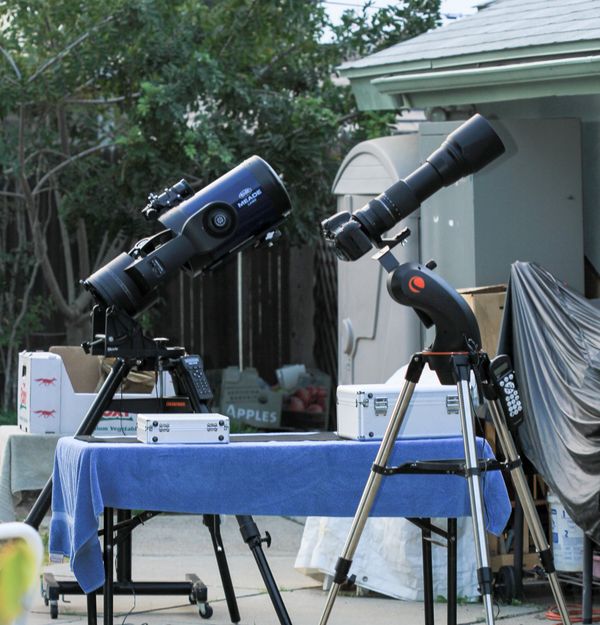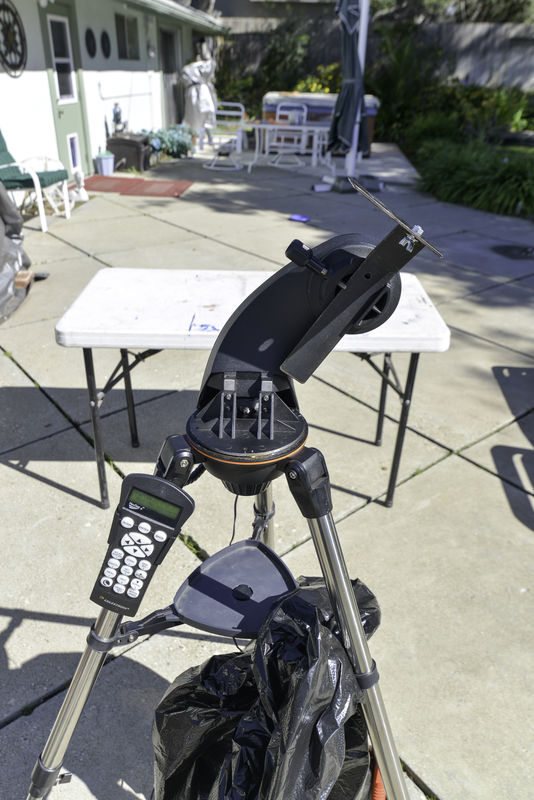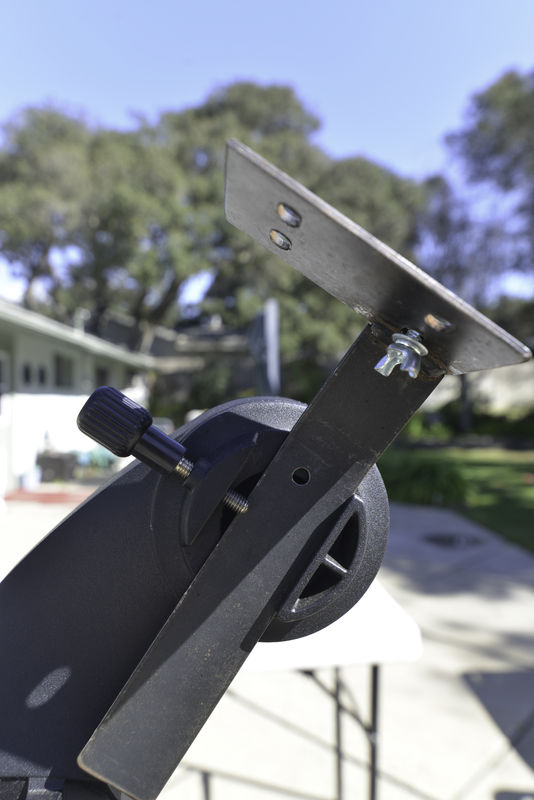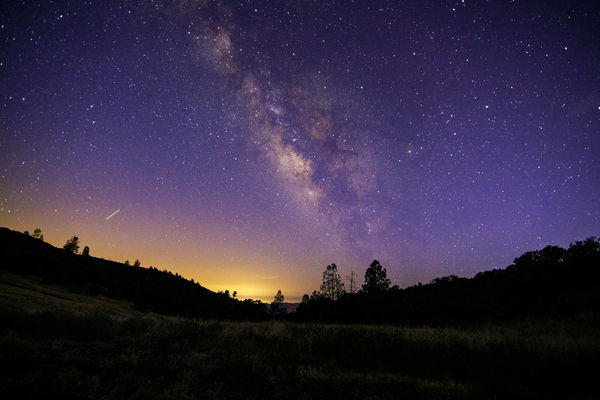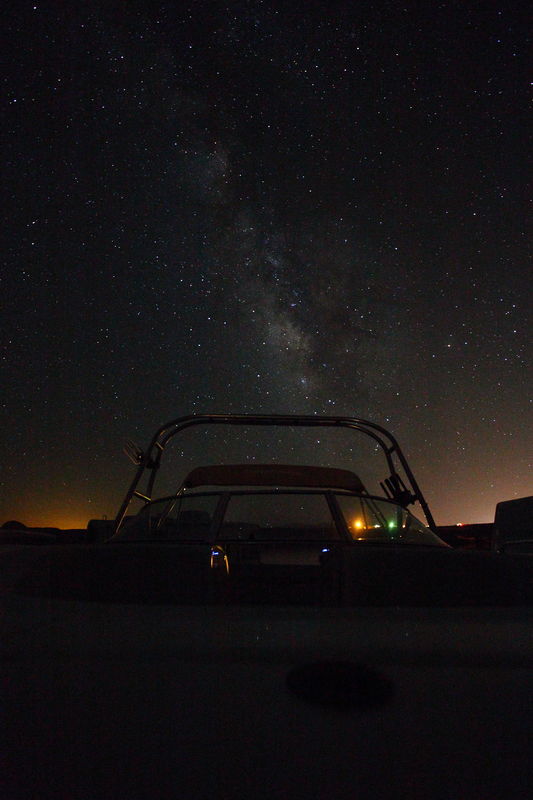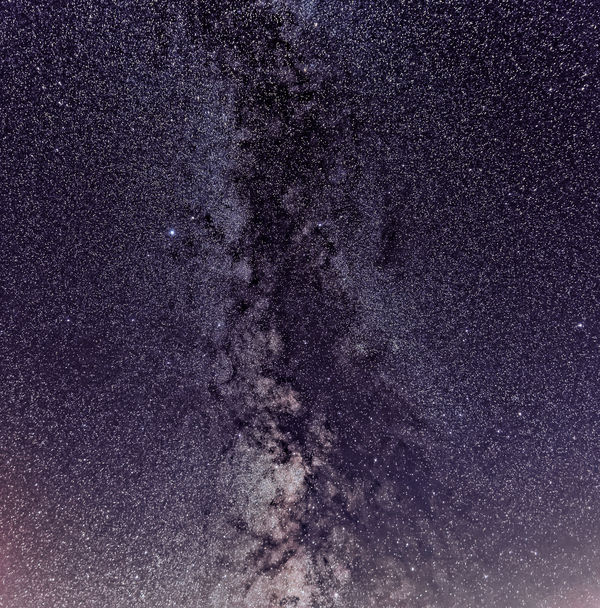Star Tracker
Jan 6, 2016 18:24:46 #
Ronsh
Loc: Floresville,Tx.
Ok i'm real slow on this topic. I am looking for a star tracker for dlsr.
1. What's a good one that will not break the bank , looked at the iOptron and the Vixen. what brand (other) do you recommend ?
2. How big of a lens can you put on these? I have a 70-200 F4, & a 100-400 II for big lens.
3.This will be follow by phone calls ,if its ok
I'm looking to get more color in my Milky Way shots and all the other neat stuff out there that i have no clue about.
Thank you in advance for your time and help.
1. What's a good one that will not break the bank , looked at the iOptron and the Vixen. what brand (other) do you recommend ?
2. How big of a lens can you put on these? I have a 70-200 F4, & a 100-400 II for big lens.
3.This will be follow by phone calls ,if its ok
I'm looking to get more color in my Milky Way shots and all the other neat stuff out there that i have no clue about.
Thank you in advance for your time and help.
Jan 6, 2016 20:20:42 #
Here is what I did to my Celestron NexStar Mount.
I got really lucky to find this steel setup to go on the mount.
http://www.ebay.com/itm/Celestron-NexStar-Computerized-Mount-Tripod-Accepts-Dovetail-Bar-NEW-/401044634522?hash=item5d601f7b9a:g:IcoAAOSwkZhWTjVF
Mine in the photos is actually for sale.
PM me if you are interested and we can continue the conversation.
I got really lucky to find this steel setup to go on the mount.
http://www.ebay.com/itm/Celestron-NexStar-Computerized-Mount-Tripod-Accepts-Dovetail-Bar-NEW-/401044634522?hash=item5d601f7b9a:g:IcoAAOSwkZhWTjVF
Mine in the photos is actually for sale.
PM me if you are interested and we can continue the conversation.
Jan 6, 2016 21:19:07 #
I have the iOptron SkyTracker and it is actually quite good. I have used it with my 70-200mm f2.8 and used it at 200mm and it did quite well. I haven't tried it with a longer lens as the 200mm seemed to be near its limit.
Jan 7, 2016 11:23:55 #
Basically, the mounts are rated by the pounds of load they can carry.
So there is your marker, Put together what you would want to put on the mount, including the Vixen rail.
Then step on a bathroom scale, step off, pick up the rig, step back on the scale, subtract the first number from the second number and there is your load you want to put on the mount.
A more math intensive way is to add up the shipping weights of your components.
Many opinions are you should try and stay at 50-60% of the rated capacity of the mount you choose.
(Example: An AVX and Sirius mounts are both rated at 30 pounds of load. So 50% would be ~15 pounds.)
Running a mount well below its capacity helps it mechanically.
Beyond that, I'd say take your pick. As far as I know, they are all "Made in China".
How big a lens can you put on one?
Check this bad boy out: http://www.celestron.com/browse-shop/astronomy/telescopes/advanced-vx-6-refractor-telescope
So there is your marker, Put together what you would want to put on the mount, including the Vixen rail.
Then step on a bathroom scale, step off, pick up the rig, step back on the scale, subtract the first number from the second number and there is your load you want to put on the mount.
A more math intensive way is to add up the shipping weights of your components.
Many opinions are you should try and stay at 50-60% of the rated capacity of the mount you choose.
(Example: An AVX and Sirius mounts are both rated at 30 pounds of load. So 50% would be ~15 pounds.)
Running a mount well below its capacity helps it mechanically.
Beyond that, I'd say take your pick. As far as I know, they are all "Made in China".
How big a lens can you put on one?
Check this bad boy out: http://www.celestron.com/browse-shop/astronomy/telescopes/advanced-vx-6-refractor-telescope
Jan 7, 2016 15:57:50 #
SonnyE wrote:
Basically, the mounts are rated by the pounds of l... (show quote)
That's a partial answer. He is mainly considering the special class of trackers designed to hold a DSLR & lens. They are limited in weight holding to about 6 or 7 pounds. They are also not corrected by a guide camera and are limited to how good a fix you get on true north. I have the iOptron, and it does have a little sighting scope to aim at Polaris. And there is an App for Smart Phones called Polar Finder that show you where to place Polaris on a circle on the scope so that you are actually pointing to the real true north.
I find that I have to set it to true north, and then every time I adjust the camera angle, I have to adjust it to true north again since the tracker can move. I also dedicated a tripod to this tracker. And I also plop a sack of gravel on the tripod support braces to lower the center of gravity and to dampen any vibration. This works really well.
And now, the last item is focal length. With a moderately wide angle lens, I have tracked with good results for up to 4 minutes. Perhaps I could have gone beyond 4 min, but I didn't try. I was lighting up the sky sufficiently that it was as far as I wanted to push it. This was a full frame camera using a 24mm lens for the Milky Way.
I have also tried it with a 200mm lens on the same camera and ran it for 30 sec. Again with good results and pin point stars. But, the longer the focal length, the more quickly you will see it track off course. I haven't tried my 300mm f2.8. That lens is much heavier. But I have great results with that lens using a real equatorial mount.
Things in the night sky come in so many sizes. Some are really big and need a wide angle lens. Some are not as big and can be seen with a moderately long camera lens. And some are rather tiny and need a higher power telescope. The Ring Nebula comes to mind. You need some real magnification for that object and it is really beyond the capability of the Sky Tracker with a camera and lens.
Another issue is that it is really difficult to aim a camera in the dark mounted on the Sky Tracker. I did make myself an adapter to hold one of those red light aiming devices and it makes such a difference.
Jan 7, 2016 16:16:09 #
Ronsh
Loc: Floresville,Tx.
JimH123 wrote:
That's a partial answer. He is mainly considering... (show quote)
Thank you for taking the time time to explain all this. Could I please see your milky way shot. Thanks Ron
Jan 7, 2016 16:58:13 #
Ronsh wrote:
Thank you for taking the time time to explain all this. Could I please see your milky way shot. Thanks Ron
Tonight, when I am home from work.
Jan 7, 2016 17:00:46 #
Jan 7, 2016 17:13:21 #
Ronsh wrote:
Thank you for taking the time time to explain all this. Could I please see your milky way shot. Thanks Ron
Here's one I took with the NexStar Guided Mount, my Camera and 16-28mm Lens.
It's Santa Barbara and Los Angeles on the horizon.
Craig
Jan 7, 2016 19:16:47 #
Ronsh
Loc: Floresville,Tx.
CraigFair wrote:
Here's one I took with the NexStar Guided Mount, my Camera and 16-28mm Lens.
It's Santa Barbara and Los Angeles on the horizon.
Craig
It's Santa Barbara and Los Angeles on the horizon.
Craig
Craig,
Thank you, that's a real nice shot , hope I can come close to that.
Jan 7, 2016 19:27:11 #
Ronsh wrote:
Craig,
Thank you, that's a real nice shot , hope I can come close to that.
Thank you, that's a real nice shot , hope I can come close to that.
Thank you Ron. And I'm sure you will.
Milky Way shots can be done in several ways.
I can't wait to see Jim H's shots. He has some good ones.
Craig
Jan 7, 2016 20:34:02 #
CraigFair wrote:
Thank you Ron. And I'm sure you will.
Milky Way shots can be done in several ways.
I can't wait to see Jim H's shots. He has some good ones.
Craig
Milky Way shots can be done in several ways.
I can't wait to see Jim H's shots. He has some good ones.
Craig
Here's one of Jim m's shots.
:roll:
Jan 7, 2016 21:23:48 #
Ronsh wrote:
Thank you for taking the time time to explain all this. Could I please see your milky way shot. Thanks Ron
Here is a Milky Way shot from last August. This is from a stack of 10 images. Each was 4 minutes. Full Frame Sony A99 camera with Tamron 24-70mm f2.8 lens. Shot at 24mm and ISO 400.
The image was actually taken in landscape mode. But there was a tree to the right that as time went by, the camera was turning towards that tree more and more. To improve the image, I cropped off the tree and also some on the other side to balance the image. The bright star to the left is Altair.
This was taken using the iOptron Sky Watcher. As you can see, the stars remained points even after 4 minutes. Because of the stacking using DSS, the dust lanes became for prominent.
When I set up for this, I very carefully used the Polar Finder App to locate the exact position of Polaris. The closer you set Polaris, the better the tracking will be.
I have had the iOptron for about 6 months now and I don't have a bad image yet. It works quite well. The biggest obstacle is the difficulty in aiming the camera and lens and sometimes, the camera ends up blocking the alignment scope.
Jan 7, 2016 21:26:42 #
Jan 7, 2016 21:27:03 #
If you want to reply, then register here. Registration is free and your account is created instantly, so you can post right away.

